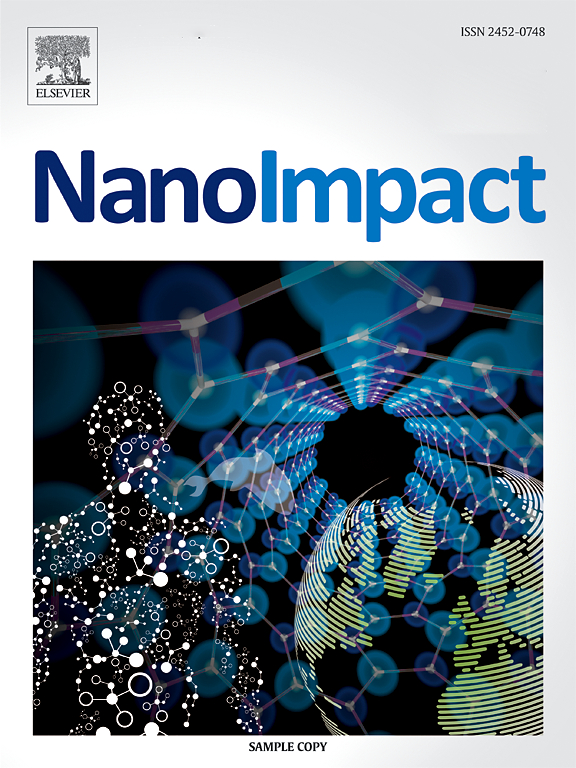聚苯乙烯微塑料和纳米塑料的混合物影响3T3-L1脂肪细胞和斑马鱼幼虫的脂肪和葡萄糖代谢。
IF 5.5
3区 环境科学与生态学
Q2 ENVIRONMENTAL SCIENCES
引用次数: 0
摘要
微塑料(MPs)和纳米塑料(NPs)是普遍存在的污染物,对人类健康构成危害。尽管大多数先前的研究已经在不同的模型中研究了MPs和NPs对消化、氧化应激和炎症的影响,但含有MPs和NPs的塑料混合物(PM)对肥胖和2型糖尿病(T2DM)的综合影响尚不清楚。我们研究的假设是验证PM暴露与代谢性疾病(如脂肪生成、脂肪生成和胰岛素抵抗)的临床特征之间的关系。因此,我们研究了PM对3个 T3-L1细胞和高脂饲料(HFD)诱导的斑马鱼幼虫脂肪和葡萄糖代谢的影响。PM暴露增加细胞活力、分化、脂肪生成(PPARγ和C/EBPα)和脂肪生成(FAS和SREBP-1c),同时降低葡萄糖摄取并抑制胰岛素信号(IRS1、PI3K、AKT和GLUT4)表达3 T3-L1细胞。在斑马鱼幼虫中,PM主要在肠道和胰腺组织中生物积累,与对照组相比,减少葡萄糖摄取,增加体重和血糖。此外,PM显著增加了脂肪生成分化(PPARγ)和合成(FASN和FABP)、促炎细胞因子(TNF-α和IL-6)和糖异生(PCK1和G6Pase)。相反,能量和脂肪代谢(AMPKα和脂联素)、胰岛素产生(INSα)、信号通路(IRS1、AKT和GLUT2)和抗炎细胞因子(IL-10和IL-4)被抑制。总的来说,这项研究揭示了PM暴露对脂肪和葡萄糖代谢的有害影响的机制,在体外和体内模型中为代谢紊乱(如2型糖尿病)提供了见解。本文章由计算机程序翻译,如有差异,请以英文原文为准。

Mixtures of polystyrene micro and nanoplastics affects fat and glucose metabolism in 3T3-L1 adipocytes and zebrafish larvae
Microplastics (MPs) and nanoplastics (NPs) are pervasive pollutants that pose a hazard to human health. Although most previous studies have investigated the effects of MPs and NPs on digestion, oxidative stress, and inflammation in diverse models, the combined effect of plastic mixtures (PM) containing MPs and NPs on obesity and type 2 diabetes mellitus (T2DM) remains unknown. The hypothesis of our study is to verify the association between PM exposure and clinical features of metabolic diseases such as lipogenesis and insulin resistance. Therefore, we investigated the effects of PM on fat and glucose metabolism in 3T3-L1 cells and high-fat diet (HFD)-induced zebrafish larvae. PM exposure increased cell viability, differentiation, adipogenesis (PPARγ and C/EBPα), and lipogenesis (FAS and SREBP-1c), while it decreased glucose uptake and inhibited insulin signal (IRS1, PI3K, AKT, and GLUT4) expression 3T3-L1 cells. In zebrafish larvae, PM mainly bioaccumulated in the intestine and pancreatic tissue, reducing glucose uptake and increasing body weight and blood glucose compared to controls. Moreover, PM significantly increased adipogenic differentiation (PPARγ) and synthesis (FASN and FABP), proinflammatory cytokines (TNF-α and IL-6), and gluconeogenesis (PCK1 and G6Pase). Conversely, energy and fat metabolism (AMPKα and adiponectin), insulin production (INSα), signaling pathway (IRS1, AKT, and GLUT2), and anti-inflammatory cytokines (IL-10 and IL-4) were suppressed. Overall, this study sheds light on the mechanisms responsible for the detrimental effects of PM exposure on fat and glucose metabolism, providing insights into metabolic disorders, like type 2 diabetes, in both in vitro and in vivo models.
求助全文
通过发布文献求助,成功后即可免费获取论文全文。
去求助
来源期刊

NanoImpact
Social Sciences-Safety Research
CiteScore
11.00
自引率
6.10%
发文量
69
审稿时长
23 days
期刊介绍:
NanoImpact is a multidisciplinary journal that focuses on nanosafety research and areas related to the impacts of manufactured nanomaterials on human and environmental systems and the behavior of nanomaterials in these systems.
 求助内容:
求助内容: 应助结果提醒方式:
应助结果提醒方式:


